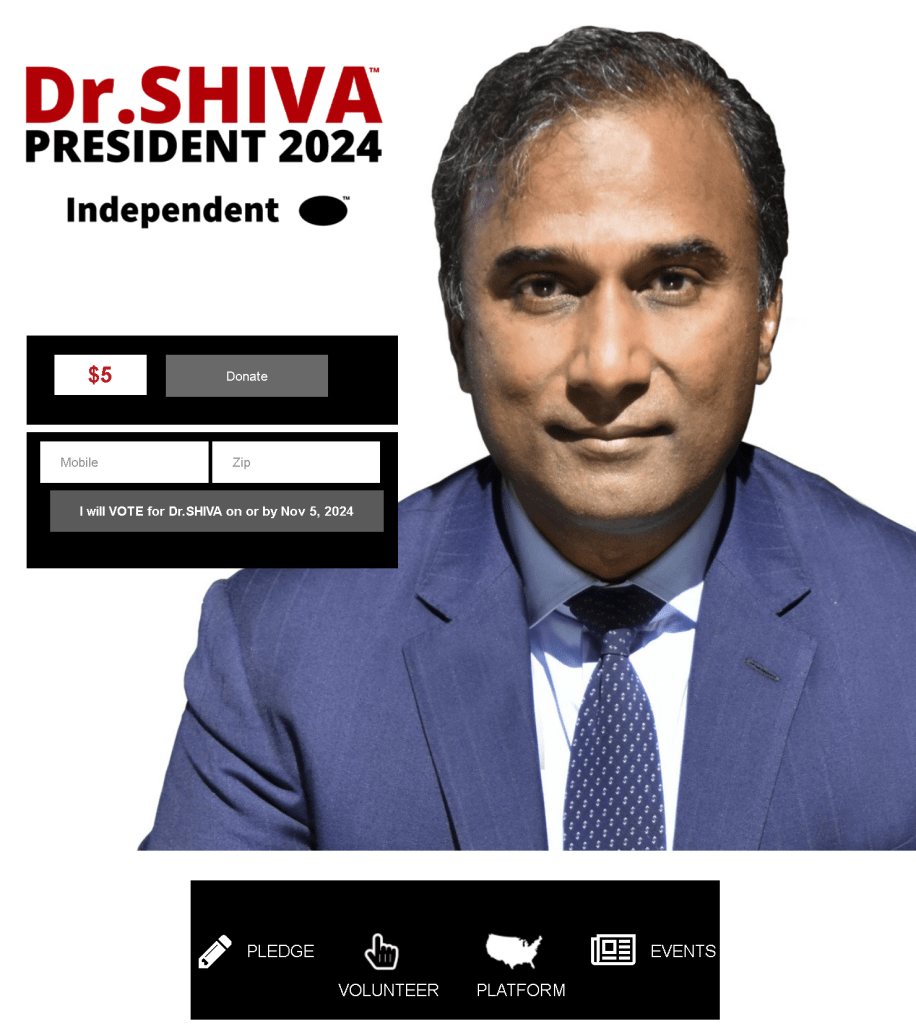In this article, I wish to share how times have not really changed, War is Still a Racket and that there are solutions to contain the jump to War by profit-driven entities who have no concern for human life.
After World War 1 and prior to World War 2, in 1935, a short book was written by Smedley D. Butler, a retired United States Marine Corps Major General and two-time Medal of Honor recipient. Based on his career military experience, Butler discusses how business interests commercially benefit from warfare.
After Butler retired from the US Marine Corps in October 1931, he made a nationwide tour in the early 1930s giving his speech “War Is a Racket”. The speech was so well received that he wrote a longer version as a short book published in 1935.
WAR IS A RACKET (THE PROFIT THAT FUELS WARFARE): THE ANTI-WAR CLASSIC BY AMERICAS MOST DECORATED SOLDIER
Contents of War is a Racket
In War Is a Racket, Butler points to a variety of examples, mostly from World War I, where industrialists, whose operations were subsidized by public funding, were able to generate substantial profits, making money from mass human suffering.
The work is divided into five chapters:
1. War is a racket
2. Who makes the profits?
3. Who pays the bills?
4. How to smash this racket!
5. To hell with war!
His work was condensed in Reader’s Digest as a book supplement, which helped popularize his message. In an introduction to the Reader’s Digest version, Lowell Thomas praised Butler’s “moral as well as physical courage”. Thomas had written Smedley Butler’s oral autobiography.
The book published in 1935 is in the public domain. A scanned copy of the original 1935 printing is available for download, in part or in whole, on the HathiTrust website.
Summary:
War is a racket. It always has been. It is possibly the oldest, easily the most profitable, and surely the most vicious. It is the only one international in scope. It is the only one in which the profits are reckoned in dollars and the losses in lives.
A racket is best described, I believe, as something that is not what it seems to the majority of people. Only a small ‘inside’ group knows what it is about. It is conducted for the benefit of the very few, at the expense of the very many. Out of war, a few people make huge fortunes.
Butler confesses that during his decades of service in the United States Marine Corps:
I helped make Mexico, especially Tampico, safe for American oil interests in 1914. I helped make Haiti and Cuba a decent place for the National City Bank boys to collect revenues in. I helped in the raping of half a dozen Central American republics for the benefit of Wall Street. The record of racketeering is long. I helped purify Nicaragua for the international banking house of Brown Brothers in 1909-1912 (where have I heard that name before?). I brought light to the Dominican Republic for American sugar interests in 1916. In China, I helped see to it that Standard Oil went its way unmolested.
Butlers Recommendations
In the booklet next to the last chapter, Butler recommended three steps to disrupt the war racket:
1. Making war unprofitable. Butler suggests that the means for war should be “conscripted” before those who would fight the war:
It can be smashed effectively only by taking the profit out of war. The only way to smash this racket is to conscript capital and industry and labor before the nation’s manhood can be conscripted.
Let the officers and the directors and the high-powered executives of our armament factories and our steel companies and our munitions makers and our ship-builders and our airplane builders and the manufacturers of all other things that provide profit in wartime as well as the bankers and the speculators be conscripted — to get $30 a month, the same wage as the lads in the trenches get.
2. Acts of war to be decided by those who fight it. He also suggests a limited referendum to determine if the war is to be fought. Eligible to vote would be those who risk death on the front lines.
3. Limitation of militaries to self-defense. For the United States, Butler recommends that the Navy be limited, by law, to operating within 200 miles of the coastline, and the Army restricted to the territorial limits of the country, ensuring that war if fought, can never be one of aggression.
A Brief Comparison of Butler’s War as A Racket to the Racket in the Early 1900s and the early 2000s
Chapter 1: War Is a Racket (Today)
Over the years, U.S. military expenditure has continuously hit record highs while the country’s fiscal deficit worsened, behind which lies the strong influence of the country’s military-industrial complex.
Throughout U.S. history, its military-industrial complex, a mighty interest group, has repeatedly manipulated the country’s political decision-making and seen wars as a shortcut to profits, prompting the U.S. government to cause one catastrophe after another in the world.
War is big business for the U.S., as Peter Kuznick, a history professor at the American University in the U.S., put it sharply.
“To create inelastic demand for arms trade, the U.S. military-industrial complex has been bent on pushing U.S. foreign policy toward wars and conflicts.”
Chapter 2: Who Makes the Profits?
The United States government’s reaction to the terrorist attacks of September 11, 200 led to dramatic increases in Pentagon funding and revenues for weapons contractors.
While the costs and consequences of America’s war policies of the twenty-first century have been well-documented, the question of who has profited from this approach has received less attention. Corporations large and small have been, by far, the largest beneficiaries of the post-9/11 surge in military spending.
Since the start of the war in Afghanistan, Pentagon spending has totaled over $14 trillion, one-third to one-half of which went to defense contractors. Some of these corporations earned profits that are widely considered legitimate. Other profits were the consequence of questionable or corrupt business practices that amount to waste, fraud, abuse, price-gouging, or profiteering.
The Pentagon’s increasing reliance on private contractors in the post-9/11 period raises multiple questions of accountability, transparency, and effectiveness. This is problematic because privatizing key functions can reduce the U.S. military’s control of activities that occur in war zones while increasing risks of waste, fraud, and abuse.
Additionally, that the waging of war is a source of profits can contradict the goal of having the U.S. lead with diplomacy in seeking to resolve conflicts. More broadly, the outsized influence of defense contractors has resulted in a growing militarization of American society. This is manifested in everything from the Pentagon’s receipt of the lion’s share of the federal discretionary budget—more than half—to the supply of excess military equipment to state and local law enforcement agencies. 3
In less than two decades, the price of shares of the top five defense contractors has increased between 3 and 12 times. And the defense stocks outperformed the stock market overall by 58 percent during the Afghanistan War, according to a US-based online publication, Intercept. The war only turns out to make those “legitimate killers” build up their bloody empire on the pillars of Afghan skeletons.
The US has half of the world’s 10 largest defense contractors and 43 out of the top 100 defense companies, according to media reports.
Lockheed Martin, by far the worldwide largest defense contractor, got about 70 percent of its $53.8 billion net sales from the US government in 2018, more than the entire budget of the Internal Revenue Service and Environmental Protection Agency combined.
“The U.S., driven by political-corporate greed, robbed Afghanistan of stability and tranquility for two decades,” said an article published on the website of Pakistan Observer.
In the Afghan war where loss is reckoned in lives, the only winner is the U.S. military-industrial complex, the article pointed out.
“The decisions to start and sustain wars are thus shaped by people with vested interests in extending the war as long as possible,” the article continued.
The five biggest U.S. defense contractors—Lockheed Martin, Raytheon, General Dynamics, Boeing, and Northrop Grumman—acquired as much as $2.02 trillion from the U.S. government’s funding for the war in Afghanistan, according to the Security Policy Reform Institute, an independent think tank in the U.S.
The fact that U.S. top weapon companies grabbed huge profits from the war in Afghanistan mirrors the age-old special existence of the military-industrial complex in the U.S.
During World War II, a structural connection between the giant war machine of the U.S. and the country’s economic system was forged and a huge interest group composed of the U.S. military, military industrial enterprises, politicians, and scientific research institutions took shape.
“This conjunction of an immense military establishment and a large arms industry is new in the American experience. The total influence—economic, political, even spiritual—is felt in every city, every state house, every office of the Federal government,” warned former U.S. President Dwight David Eisenhower in his farewell speech delivered in 1961.
“In the councils of government, we must guard against the acquisition of unwarranted influence, whether sought or unsought, by the military-industrial complex,” Eisenhower added.
However, in the following decades, the influence of the military-industrial complex has not been curbed, but penetrated deeply into the decision-making process of the U.S.
It is No Secret
Like in Butlers time again we see that it is no secret that U.S. military industry companies spend large sums of money on lobbying U.S. politicians, donating money to their election campaigns and funding the so-called policy experts to ensure policies are in their favor.
Statistics suggest that more than 4,000 military-industrial complex lobbies are active in today’s U.S. political arena.
“The U.S. government has unrestrainedly provided resources for arms dealers, sacrificing investment in its public goods, and increasing the risks of wars, which has done itself and others no good”, commented Erica Fein, the Senior Washington Director of American anti-war coalition Win Without War.
The U.S. is searching for enemies around the world under the guise of safeguarding national security and promoting democracy and freedom, of which one of the drivers is the interests of the military-industrial complex, as American observers noted.
If it had not been the Russians, the U.S. would have devised some other rivals to replace them as a justification for its military aggression, George Kennan, who formulated the U.S. containment policy toward the Soviet Union, said in a speech in his later years.
Since the end of the Cold War, the U.S. has successively launched the Kosovo War, the War in Afghanistan, the Iraq War, and many other wars, in which American arms dealers have made a great fortune.
For more than two decades the Pentagon has been unable to complete a financial audit. In recent years we learned it cannot provide adequate documentation for $6.5 trillion worth of year-end adjustments and it has failed to pursue reforms that could save billions. Waste and inefficiency runs rampant in the Department of Defense. Yet, Congress does little to address these issues, presumably, to look more “pro-military” to voters (as if any of our Representatives in Congress are “anti-military”).
Chapter 3: Who Pays the Bills?
Huge bonus from wars in Middle East
No different than in Butler’s time the bearer of the War debt is the same, The US wars in Afghanistan, Iraq and Syria have cost American taxpayers $6.4 trillion since they began in 2001, according to the report by the Watson Institute of International and Public Affairs at Brown University published in November 2019.
Taxpayers in the US were exploited financially by the government’s immense military expenses. From 2001 to 2021, the US annual defense budget has kept rocketing. According to the latest study by the Cost of War Project of Brown University, the war in Afghanistan has cost $2.3 trillion. That is an expense of $300 million per day for 20 years.
Countless dollars were turned into weapons like Black Hawks, Scan Eagles, Humvees, and carbines to kill the people in the Middle East region.
What if I told you the past U.S. Secretary of Defense said that our greatest national security threat is not another country or terrorist organization but our national debt?
U.S. Secretary of Defense James Mattis:
“The foundation of military strength is our economic strength. In a few short years paying interest on our debt will be a bigger bill than what we pay for defense. Much of that interest money is destined to leave America for overseas. If we refuse to reduce our debt/pay down our deficit, what is the impact on national security for future generations who will inherit this irresponsible debt and the taxes to service it? No nation in history has maintained its military power if it failed to keep its fiscal house in order.”
A growing national debt limits economic growth and crowds out opportunity. Long-term deficits could lead to economic disasters, inflation, and high-interest rates that send more tax dollars to pay off the interest on our debt rather than priorities like education, infrastructure, and not the least of which, defense.
Military Spending: The Good, the Bad and the Ugly By Adam Kazda | JUNE 19, 2018
Chapter 4: How to Smash This Racket!
According to Butler, It can be smashed effectively only by taking the profit out of war. The only way to smash this racket is to conscript capital and industry and labor before the nation’s manhood can be conscripted.
Let the officers and the directors and the high-powered executives of our armament factories and our steel companies and our munitions makers and our shipbuilders and our airplane builders and the manufacturers of all other things that provide profit in wartime as well as the bankers and the speculators be conscripted and let them get the same wage as the lads in the trenches get.
Better yet the solution to War can only be found in seeking a greater understanding of what Fears we hold dear and working in harmony to make this world a better place.

Chapter 5: To Hell with War!
To put an end to the war mentality the 7 billion people of planet earth need to Rise up in a bottom-up movement and demand that one’s government follow its Constitution, cut off funding for war and find a way to peace.
US citizens must demand that Congress not give away or allow the president to usurp its sole authority under the Constitution to make the decision to go to war. Citizens should also demand that Congress exercise its power of the purse to prevent war, including not giving financial support to a president attempting to bribe other countries to participate in an illegal war.
Whatever proceeds in the ongoing conflict between Russia and Ukraine here in 2022, private arms manufacturers, especially those in the United States, are set to profit. The rise of the military-industrial complex adds an unprecedented dimension to the processes of war.
The waging of war itself comes with an expectation of costs endured by almost every party involved. Traditionally, all levels of society, from political leaders to the general population, face some set of sacrifices or risks in fighting another country.
Arms dealers have emerged as a noteworthy exception to this paradigm, though, as they only profit from violence or defense. They exist in a position removed from the government yet have the power and funds to push desired legislation. Whether one agrees with the predominance of the military-industrial complex or not, their growing influence will likely lead to increased militarism and armed defense both in the United States and the rest of the globe.

The Puppeteers Weapons
The puppeteers who pull the strings of the war machine have weapons
- They operate behind a screen of exclusivity where their actions serve only their needs.
- The screen is opaque in nature, hiding their hidden, secretive plans and actions that create pain and suffering for the masses.
- They operate from a centrally controlled position ruling over the mass media, banks, and politicians
- They censor free speech and any opposition to their war narrative.
- They de personalize anyone who disagrees with their position through smear campaigns.
There is hope to be found in a Pro-Peace Movement
The 7 billion people of our planet get closer daily to the utilization of the awareness that in order to beat the elite Puppeteers we must counter their weapons with ours.
- Inclusivity in the decision making, understanding and use of systems that help us utilize freedom to make this world a more peaceful one.
- The demand for Transparency in all the actions that our government takes.
- The teaching of “Systems Thinking” so that we all get to understand we are all part of a universal system that provides abundant opportunities for all who use their god given ability to innovate in the creation of a more heart-based approach to life.
- De-centralization of government so that people’s voices can be heard in the decision-making of War/ Peace.
- Valuing greatly the individual person and the sharing of greater dimensions of Truth, Freedom, and Health in a joyful, peaceful, and Loving world.





































